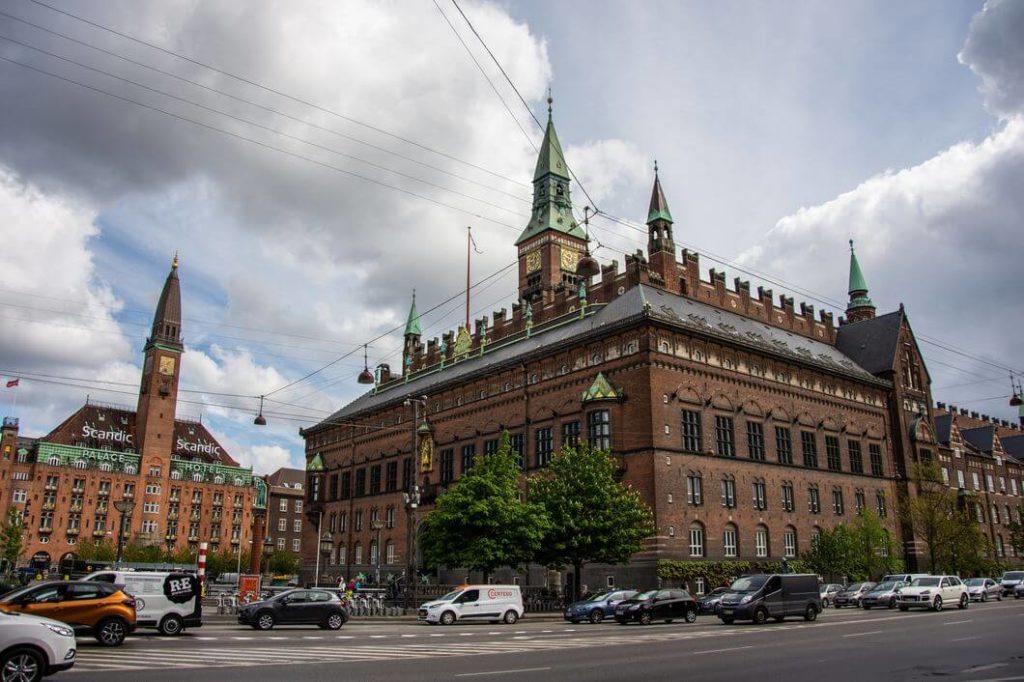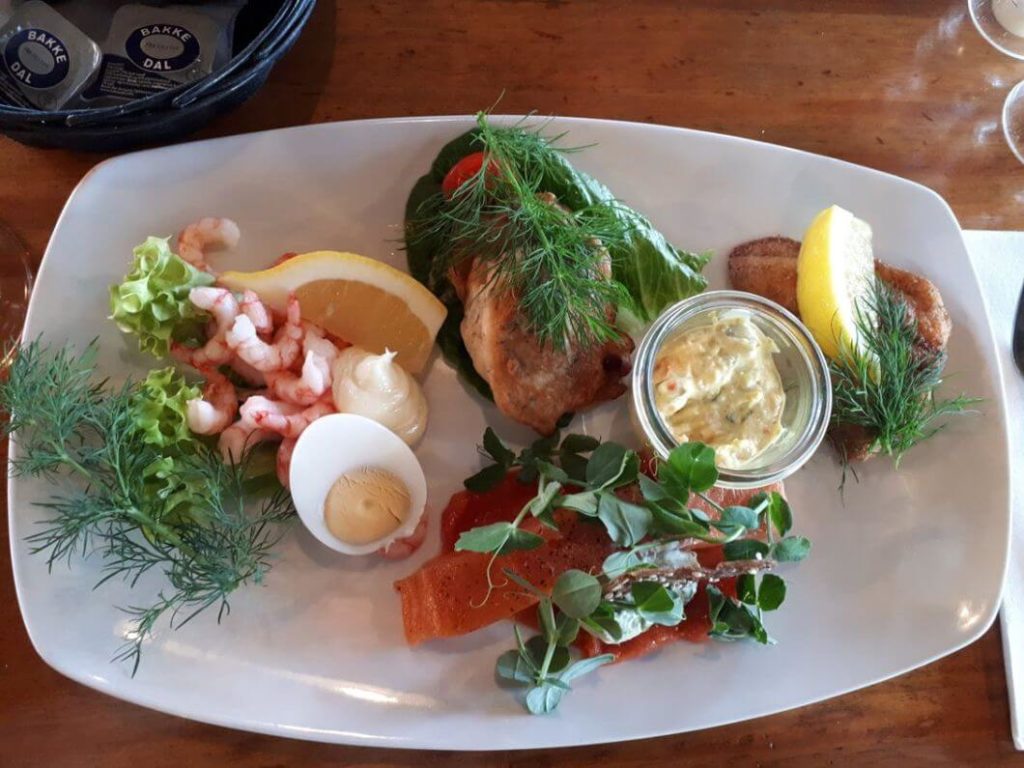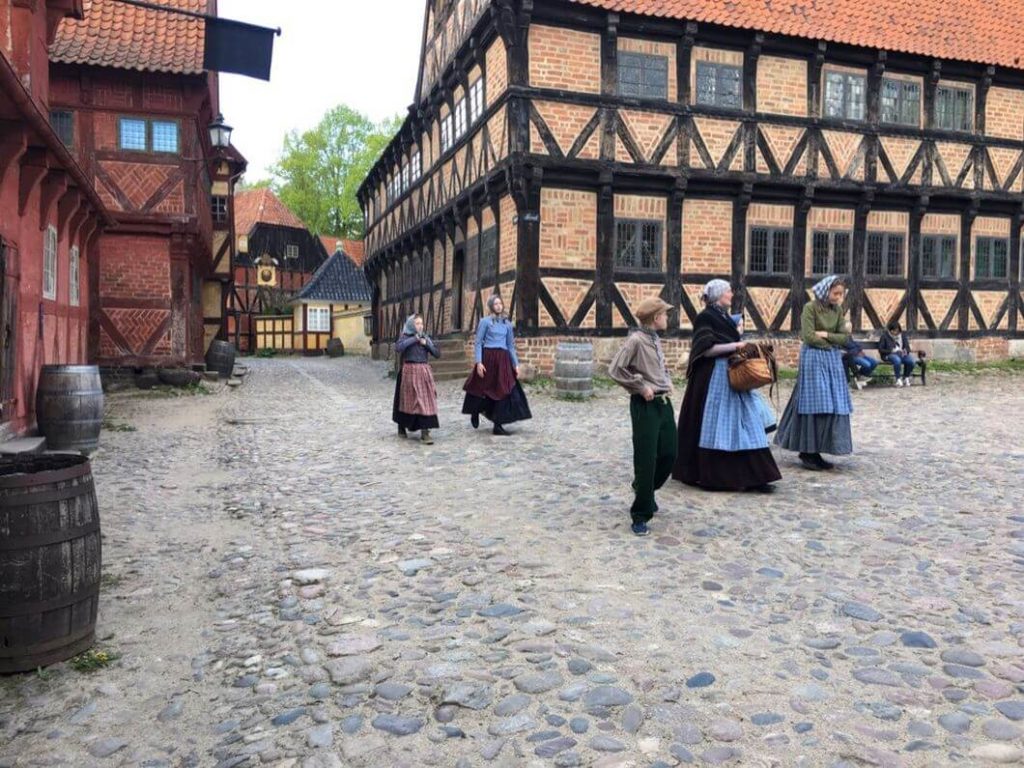One Week Backpacking Denmark Itinerary
Here is a backpacking Denmark travel itinerary to make certain that you don’t miss a thing on your trip. This backpacking route can easily be combined with another, done in reverse, and customized based on your preferences!
Total Traveling Time – 5 to 7 days
Backpacking Copenhagen (2 days)
It’s hard to resist the charms of Copenhagen. But what is Copenhagen known for? There are many green spaces, the Little Mermaid statue and Freetown Christiania. the latter is a hidden gem and a special place that is home to Green Light District where you can purchase cannabis.
It has the busiest airport in Scandinavia serving the Danish capital and also Southern Sweden thanks to its location adjacent to the Øresund Bridge. Its city center is quite compact and you can cover the main sights by foot. There’re plenty of activities and experiences for people of all ages and interests. Therefore it’s a logical starting point for any trip across Denmark.

Copenhagen is the epitome of the Scandinavian way of life. Alternative culture thrives in the self-proclaimed autonomous neighborhood of Christiania. Definitely, the most interesting hippie district to visit in Copenhagen that boasts some trendy smoky bars, vegetarian restaurants, and concert venues. The city also has all the eating, drinking and partying options you’d expect of a major Western European capital with some fine waterfront settings, the highlight of which is 17th Century Nyhavn.
Backpacking Roskilde (Half Day)
Only half an hour from Copenhagen, Roskilde is a perfect spot for a day trip from the Danish capital. Steeped in Viking history, Roskilde should be high on everyone’s travel bucket list. This is an ancient Viking city that used to be the historical capital between the 11th and the 13th centuries.
Roskilde highlights include a 13th Century cathedral and a compelling Viking Museum. It will take you back in time and allow you to start getting to grips with the history of Denmark. Roskilde is also the setting for the largest Scandinavian festival, held over a week each summer. Roskilde Festival attracts folks from all over Europe!
If you visit Roskilde as part of the suggested one-week Denmark itinerary, you may want to hop on a train from Copenhagen in the morning, and then continuing to Odense later in the day.
Backpacking Odense (1-2 Days)
No trip to Denmark is complete without visiting Odense. This is Denmark’s third-largest city and situated some 130km from Roskilde. It takes little over an hour to get there by train.
Odense is a popular stop on any Denmark backpacking route and I can’t imagine going to Odense without a trip to the famous Egeskov Castle, Europe’s best-preserved Renaissance castles. The city lies in the centre of the island of Funen and is wonderfully walkable. This makes Odense easy to explore on a budget, without the need to spend extra cash on getting around.
If you have extra time, there are plenty of day trips to the surrounding towns and countryside. The city is also well known as Hans Christian Andersen’s hometown. Visit the Hans Christian Andersen Museum that tells the story of the writer’s life and has a lot of his personal belongings.
Backpacking Aarhus (1-2 Days)
It’s so easy to fall in love with Aarhus. However, this vibrant Danish city is often overlooked in favor of its bigger counterparts. Aarhus may have quite a small town feel but it definitely deserves attention and makes for a wonderful city break.
Aarhus is the second largest city in Denmark, and it will only take a couple of days to explore the whole city. City’s history began as a fortified Viking settlement founded in 770. Filled with culture, interesting shops, pretty architecture, and some truly fabulous food, Aarhus is also home to a diverse and thriving student population though.
Aarhus has become an important cultural and economic center in Jutland. The Old Town (Den Gamle By), the royal summer palace of Marselisborg and Aarhus Cathedral are great places to soak up local life. Those fond of unusual places may want to visit the Women’s Museum, Grisebrønden (Well of Pigs) sculpture that symbolizes the love of Danes to the bacon and the Viking Moot, an annual event, which takes place in July.
Aarhus has become an important cultural and economic center in Jutland. The Old Town (Den Gamle By), the royal summer palace of Marselisborg and Aarhus Cathedral are great places to check out. Rent a bike to save money on transportation and visit the Women’s Museum, Grisebrønden (Well of Pigs) sculpture that symbolizes the love of Danes to the bacon. If you’re lucky enough, don’t miss out on visiting the Viking Moot, an annual event, which takes place at the end of July.






